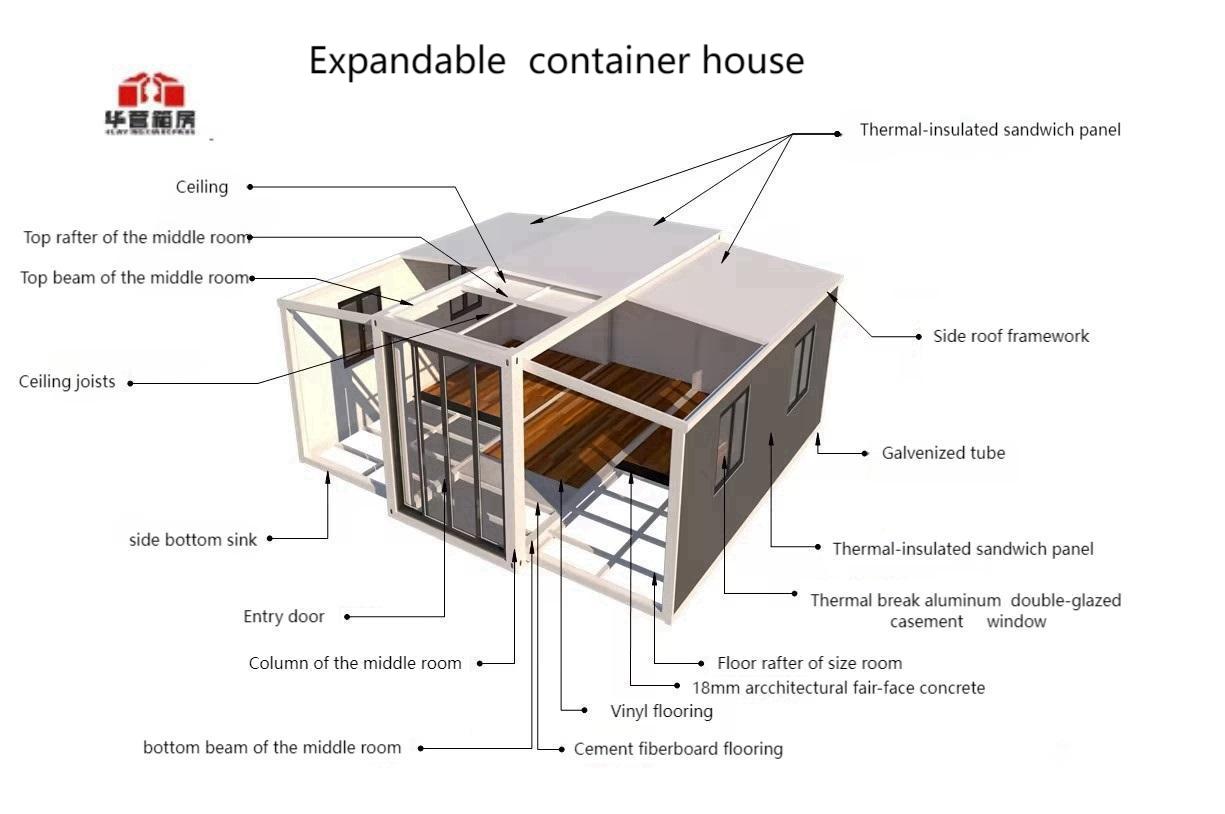Folding container houses on trailers combine portability with rapid deployment, offering durable, customizable living/working spaces that unfold in hours. Ideal for mobile offices, emergency housing, or off-grid adventures, these innovative structures feature integrated trailer bases, weather-resistant materials, and space-saving designs that transform transport efficiency into instant functionality.
Why Folding Container Houses on Trailers Are Changing the Game
Imagine having a fully functional house that folds down to the size of a shipping container, hitches to your truck, and deploys in under three hours. That’s the magic of folding container houses on trailers! Unlike traditional construction or static prefabs, these units merge mobility with durability. You get a steel-framed, weatherproof structure that travels like cargo but lives like a premium space—whether you need a mobile clinic in a disaster zone, a pop-up retail shop at festivals, or a cozy cabin that follows your wanderlust. The integrated trailer base isn’t just transport; it’s the foundation of your instant habitat.
Engineering Marvel: How These Foldable Units Work
At first glance, a folded unit looks like a standard 20ft shipping container—but the genius lies in its kinetic design. Hydraulic systems or manual pulleys allow walls and roofs to pivot outward, expanding your space by 200-300% in minutes. Check out this structural blueprint showing the folding mechanism:

Key components include:
- Galvanized Steel Frame: Corrosion-resistant skeleton supporting up to 3 stacked units
- Fold-and-Pivot Walls: Interlocking panels with EPDM seals against moisture
- Integrated Trailer Chassis: DOT-approved axles with electric brakes and stabilizer jacks
- Composite Insulation: Rock wool/PU foam cores for R-15+ thermal efficiency
Witness the Speed: Installation in Real-Time
Seeing is believing! Watch how a 400 sq ft folding house transforms from transport mode to ready-to-use space in under 3 hours—no cranes or special tools needed. Just a flat surface and basic hand tools:
Pro Tip: Opt for models with automatic leveling jacks—they cut setup time by 40% on uneven terrain!
Top 5 Applications You Haven’t Considered
Beyond obvious uses like construction site offices, these trailer-mounted gems shine in unexpected scenarios:
- Disaster Response Villages: Deploy 20+ units as temporary housing with shared utilities in flood/earthquake zones
- Agritourism Pods: Create luxury vineyard glamping suites relocated seasonally
- Mobile Medical Labs: ISO-certified clean rooms for pandemic testing in remote areas
- Pop-Up University Housing: Solve dorm shortages during campus expansions
- Film Crew Basecamps: Soundproofed editing studios moved between shooting locations
Trailer vs. Foundation Models: Which Wins?
| Feature | Trailer-Mounted | Foundation-Based |
|---|---|---|
| Relocation Cost | $0.50/mile | $5,000+ per move |
| Deployment Time | 2-4 hours | 3-7 days |
| Regulatory Approval | Classed as RV (simpler permits) | Building codes apply |
| Max Size | 400 sq ft (expandable) | Unlimited (modular) |
| Best For | Temporary/mobile needs | Permanent installations |
Customization Secrets from Industry Insiders
“Most buyers overlook modular wiring,” says Lara Chen, project manager at Global Portable Solutions. “Pre-installed conduit channels let you add solar or Ethernet post-purchase without tearing walls open.” Other pro upgrades:
- Slide-Out Rooms: Gain extra 4ft width for kitchens
- Retractable Awnings: Create shaded decks in arid climates
- Undercarriage Storage: Water tanks/generators in trailer cavities
- Magnetic Interior Panels: Reconfigure room layouts monthly
Durability Myths Debunked
Concerned about longevity? Stress-tests reveal folding houses withstand 120mph winds when anchored—outperforming many site-built homes. The secret? Continuous steel frames and triple-sealed joints. One Alaskan buyer reported zero damage after 18 months in -40°F winters, thanks to argon-filled windows and heated flooring. Maintenance is minimal: lubricate hinges biannually and inspect trailer brakes annually.
Smart Buying Checklist
Before purchasing, verify these critical specs:
- ✅ DOT/NTEA compliance for road legality
- ✅ 14-gauge steel minimum (12-gauge preferred)
- ✅ IP65-rated electrical systems
- ✅ 5-year structural warranty
- ✅ Tare weight under 10,000 lbs (standard license towing)
Warning: Avoid “universal” trailer hitches—custom torsion axles prevent sway during transit!
The Future: Where Innovation’s Heading Next
Emerging tech will make these units smarter and greener. Expect solar-integrated folding roofs, AI climate systems that pre-heat your space en route, and mycelium-based insulation that regenerates after damage. With zoning laws evolving to favor movable dwellings (especially in EU and California), folding houses on trailers aren’t just convenient—they’re becoming a lifestyle revolution for digital nomads, eco-builders, and crisis responders alike.
